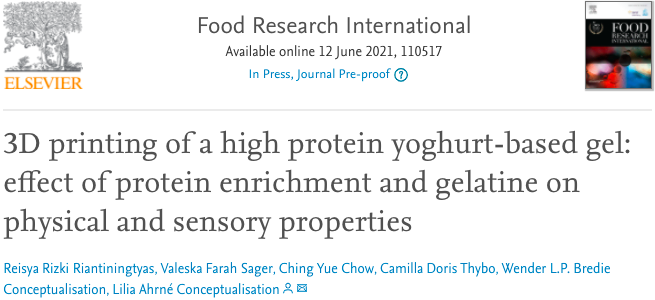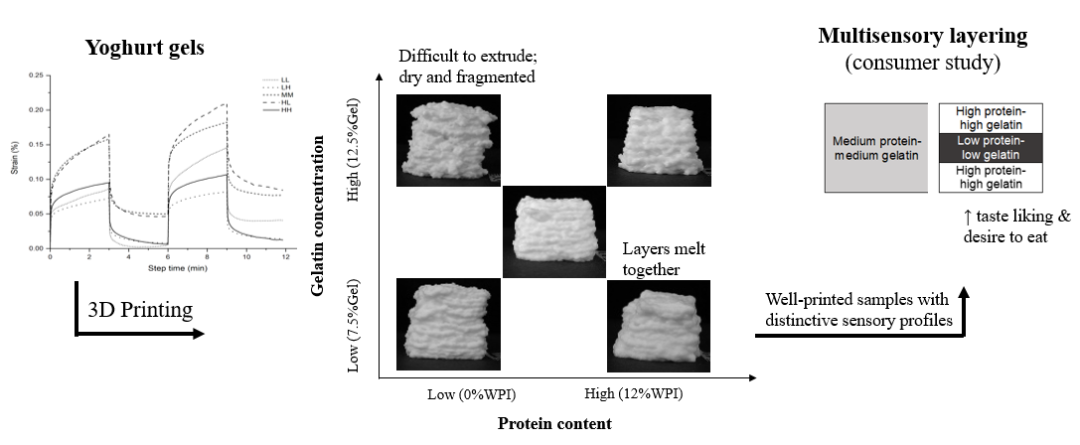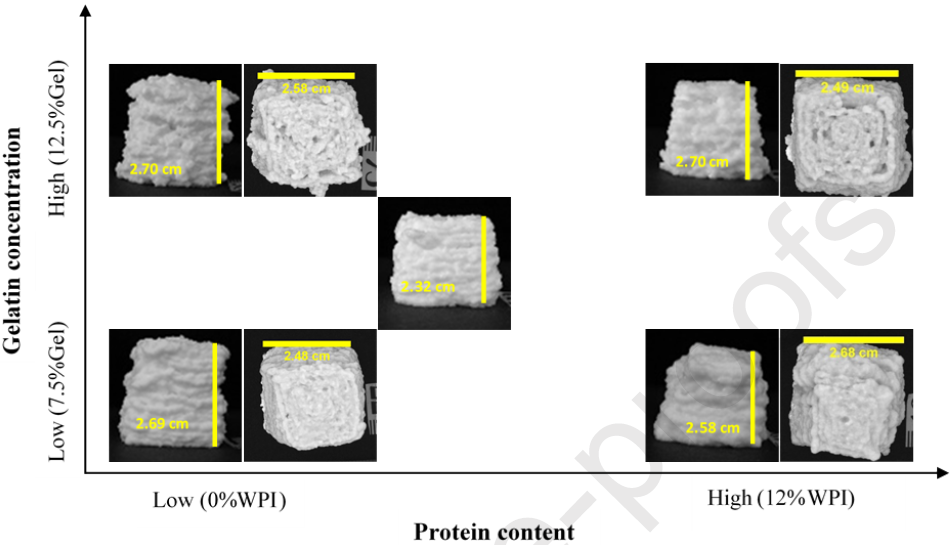June 2, 2021, University of Copenhagen, Denmark: Ching Yue Chow (1 work)….., Lilia Ahrné* (communication), etc.
food
A research article entitled “Printability, stability and sensory properties of protein-enriched 3D-printed lemon mousse for personalised in-between meals” was published online by Food Hydrocolloids (IF: 7.053), a TOP journal in Science and Technology Zone 1. The purpose of this study was to understand the effect of different concentrations of gelatin, citric acid and whey protein isolate in a lemon mousse formulation on printability and sensory properties.Unprinted and3D printingThe properties of the lemon mousse were characterized.and then respectively by
training
The sensory panel and consumer panel evaluated selected3D printingOrganoleptic properties and acceptance of lemon mousse.

Background Introduction The research on 3D food printing mainly focuses on the rheology of food ink and its printability, while the research on the sensory aspects of printed food is limited and necessary. For example, printed food has a layered structure and unique appearance that can affect the sensory perception of food (Severini et al., 2018, Sun et al., 2018). Stabilization of food inks by adding hydrocolloids affects the perceived texture and mouthfeel of printed food products (Cohen et al., 2009). Characterizing the sensory properties of printed food products can inform multi-sensory design, for example, to improve palatability, multi-layer food products can be created with different compositions and sensory properties (Chow et al., 2021; Hyde & Witherly, 1993).
Foams contain a stable gas-phase continuous phase consisting of various food ingredients such as proteins, emulsifiers and fat crystals (Zúñiga & Aguilera, 2008). A mousse is an aerated gel, a viscoelastic foam in which the continuous phase is cured by gelatin (Campbell & Mougeot, 1999; Zúñiga & Aguilera, 2008).
Lemon mousse was successfully printed using an extrusion-based 3D food printer. Although the gel structure was disrupted by nozzle extrusion during the printing process, resulting in significant changes in textural properties, which in turn affected the sensory properties, a 3D printed mousse with sensory appeal and stability was finally obtained. Texture properties and rheological analysis in unprinted samples showed that the concentrations of gelatin and whey protein isolate (WPI) greatly altered the mousse properties, with citric acid having a modest but minor effect. These changes had an impact on the printability and stability of the 3D printed mousse. Gelatin has a higher storage modulus and yield stress, and its gel solidification effect is opposite to the softening effect of whey protein isolate (WPI), which improves the adhesion of mousse even though WPI acts as an internal filler.
use
standard
The lemon mousse recipe requires 2% gelatin to produce a 3D printed mousse with acceptable shape and post-print stability. Adding up to 18% WPI, in addition to increasing the nutritional value of the product, also improves the characteristics of the 3D printed mousse, making the layers of the mousse clearer and blending together to form a smoother mousse surface. The increase in citric acid concentration, while having less effect on the measured texture properties, significantly improved the printability and stability of the mousse, possibly due to the higher storage modulus of the observed mousse network strengthening.
Sensory analysis of these formulations showed that high WPI concentrations were associated with appearance gloss, smoothness, and stickiness, while increasing citric acid concentration increased sour level intensity. Lemon mousse formulations with high gelatin concentration and medium to high WPI concentration are stable after printing and have attractive sensory profiles. The softening effect of WPI improves smoothness and reduces the texture perception of block cracks, which is related to the gel curing effect of high concentrations of gelatin in the 3D printed mousse. This may help consumers embrace 3D printed mousse. Further research could focus on improving the multi-sensory layered design of 3D printed mousses that have the potential to become appetitive and protein-rich snacks for specific consumer groups with different needs.

▲Bubble size of all unprinted (left) and 3D printed (right) lemon mousse samples. The scale bar is 0.1 mm. For unprinted samples and 3D printed samples, 3 images were taken for each recipe, and representative images were selected for presentation.

▲The side view of the 3D printed lemon mousse after direct printing (T0) minutes and storage for 30 minutes (T30). 3 pictures were taken for each recipe, and representative pictures were selected for presentation.
Original link
https://doi.org/10.1016/j.foodhyd.2021.106943
(responsible editor: admin)


0 Comments for “Danish academics study “Printability, stability and sensory properties of protein-enriched 3D printed personalized mealtime lemon mousse””